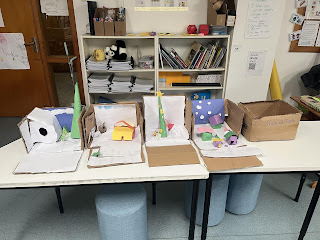Importance of Assessment in Elementary Reading Programs
Envision the
classroom you would like to have in the future. Are all the students learning
at their own pace, using the information of where they are right now to inform
your practices and groupings OR is it only whole group with very little
addressing of individual needs or skills that need to be developed? It is my
hope that your answer was the former, as this is the way that the highest
number of student needs can be addressed. This kind of classroom can only be
achieved with excellent planning, assessment and classroom management at the
forefront.
Developing
reading skills should be a core element of elementary school teaching. In order
to gain the most mileage from planning, including the three kinds of assessment
is necessary in your classroom.
You can only
reliably implement/impart assessment if you:
1. Know your material and standards.
2. Begin with the end in mind.
3. Design material to appropriately meet and measure
achievement of these standards / levels of performance and understanding.
4. Interpret the data to inform planning in a timely
manner.
5. Communicate with parents and students in a timely
and transparent manner.
Of course you
need to make sure that the assessments are high enough in quality and amount,
that data can be used to make conclusions. Good assessment in reading then
needs to be at the forefront of your classroom.
The three
different kinds of assessment with examples you can use for your reading
program, are listed below.
Assessment for Learning
This
type of assessment is used to get an idea of where students are right now. It
is often preliminary and done at the beginning of a unit or topic of study.
Teachers can use this sort of assessment information to get an idea of the
knowledge, understanding or misconceptions that students are starting with. A
teacher can use this information to explore where they need to go with students
next (for instruction as a class, a group or individually).
Tools you might
use for this type of assessment include: CASI, Running Records, word assessment
surveys (for detecting where students are struggling in decoding words),
quizzes, worksheets, question cards, anecdotal notes during group and pair
discussions.
Assessment as Reading
This type of assessment
is used to try and get students to think metacognatively about their own work.
Students need to learn how to ask themselves the right questions, make the
right connections and realistically know their strengths and weaknesses. They
also learn problem solving strategies.
Tools you might
use for this type of assessment include: reading conferences, two stars and a
wish, reflective writing, reflective dialogue, student – teacher conferencing,
portfolios
As Lorna Earl suggests in Assessment
as Learning: Using Classroom Assessment to Maximise Student Learning,
assessment as learning should be at the forefront of the teaching classroom.
Assessment as learning empowers students to recognize and discuss their
strengths, weaknesses and areas for improvement. It gives them a sense of
ownership and enables teachers to step back, do less telling and have much
richer dialogue and discussion with students. Of course students do not learn
these skills on their own, which necessitates modelling.
Assessment of Reading
This type of assessment is
often what shows up on report cards. It usually comes at the end of a unit of
study. It informs teachers if students have mastered the material. Assessments
can come in many forms (including tests and worksheets), however often the best
way of demonstrating their understanding is in authentic tasks. For example –
writing a letter to the city about why an area should not be developed for
environmental reasons, creating a puppet show, creating a brochure advertising
their favourite book or creating a cooking show for kids and utilizing procedural
writing. Wherever possible students should have choice in how they demonstrate
their knowledge. Although choice sometimes involves more work for the teacher,
it honors the different ways that students learn, accumulate, assimilate and
synthesize information. The key is that whatever assessment you come up with is
an accurate way of assessing the standards and gives enough information to come
to a conclusion about whether or not the student understood the material, skill
or comprehension strategy.
Three questions I would like to leave you my blog readers
with are:
* How can you use
assessment to inform descriptive feedback?
* If you find that
a group of students share a particular misconception after assessment for
learning, what can you do in order to best solve the problem?
* If students are
unable to think well about their work in a metacognitive sense, what tools
could you create to help them?
It is my hope
that everyone reading this will consider the above information and utilize it
in their classrooms today or in the future. For further information about
reading assessment, please watch the video I made below:



Comments
Post a Comment